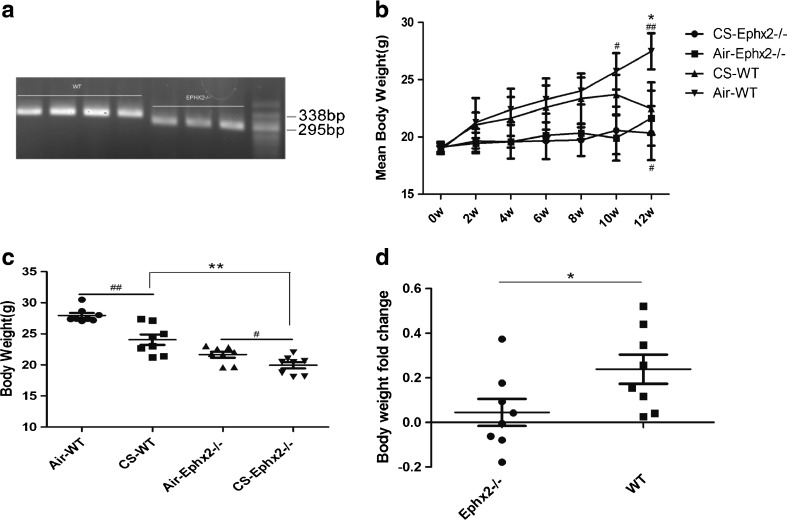Fig. 1.
Weight of WT and KO mice changes after exposure to cigarette smoke. a Representative genotype analysis of WT and Ephx2−/− mice. WT type mice produced a gene 338 bp in size and Ephx2−/− mice produced a gene product 295 bp in size. b–d WT mice (n = 20) and Ephx2−/− mice (n = 20) were exposed to air (air-WT, n = 10; air-Ephx2−/−, n = 10) or CS (CS-WT, n = 10; CS-Ephx2−/−, n = 10) for 12 weeks and weight was measured once every 2 weeks. b Weight gain over time. WT weight increased more than in the KO group. c After 12 weeks of treatment, mean weight of mice in the CS-WT group was lower than in the air-WT group and the mean weight of mice in the CS-Ephx2−/− group was lower than that of mice in the air-Ephx2−/−group. d After 12 weeks of treatment, the Ephx2−/− group weight fold-change was less than that of the WT group. Results are expressed as means ± SD. # P < 0.05, significant differences between CS-exposed group and its corresponding air-exposed group; ## P < 0.01, significant differences between CS-exposed group and its corresponding air-exposed group; * P < 0.05, significant differences between CS-exposed WT mice and CS-exposed Ephx2−/− mice, ** P < 0.01, significant differences between CS-exposed WT mice and CS-exposed Ephx2−/− mice.

